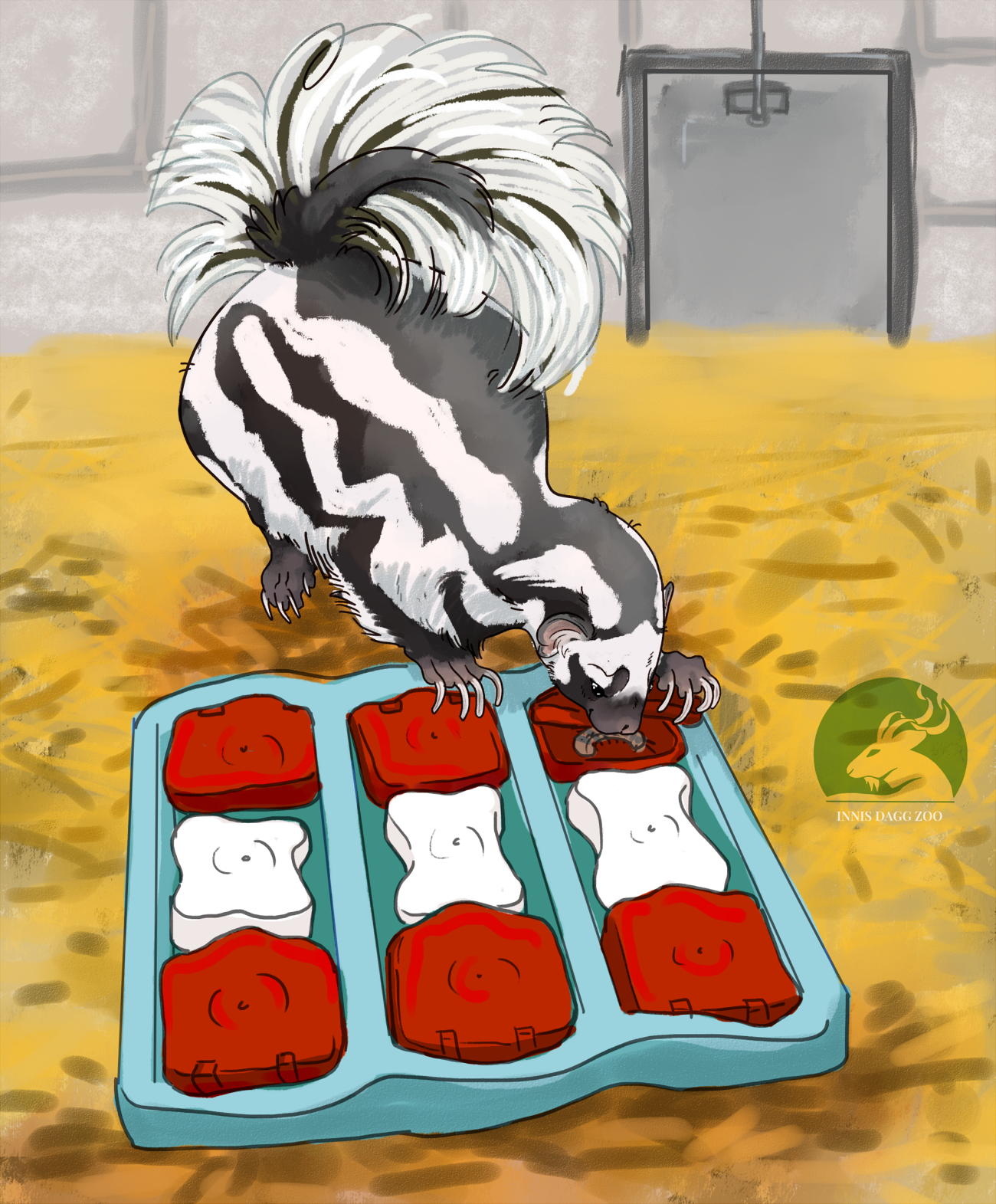
SKUNK ON THE HUNT!
11/01/2025
CREATURE FEATURE: Today we are featuring currently one of our smallest residents, the Pygmy Spotted Skunk! Spilogale pygmaea is a burrowing member of the Skunk family found along the Pacific Coast of Mexico! They are incredibly weasel-like in nature, compared to their cousins and just like their name suggests they are SO very small. Only reaching 185-465mm (that's 7.2-18.3 inches for the Americans) in total length. Some are small enough to fit in your hand! Skunks are known omnivores however the Pygmy Spotted Skunk is known to be particularly carnivorous, aside from fruits and berries, they enjoy insects, small mammals, birds and reptiles. In the wild they are even known to occasionally break into chicken coops to steal eggs! Today, our friend is enjoying an enrichment puzzle feeder filled with many of his favorite snacks!
The IUCN Red List species is classified as a vulnerable species due to the progressive reduction of its population, up to 30% over three generations (15 years) inferred by the percentage of habitat loss. This species has a restricted and discontinuous habitat in an area of Mexico in open development is threatened as a result of the activities related to tourism development. The species inhabits a variety of habitats and can survive under conditions of human intervention in these areas, but dogs and cats pose a threat.
[x] - Zookeeper Carly

